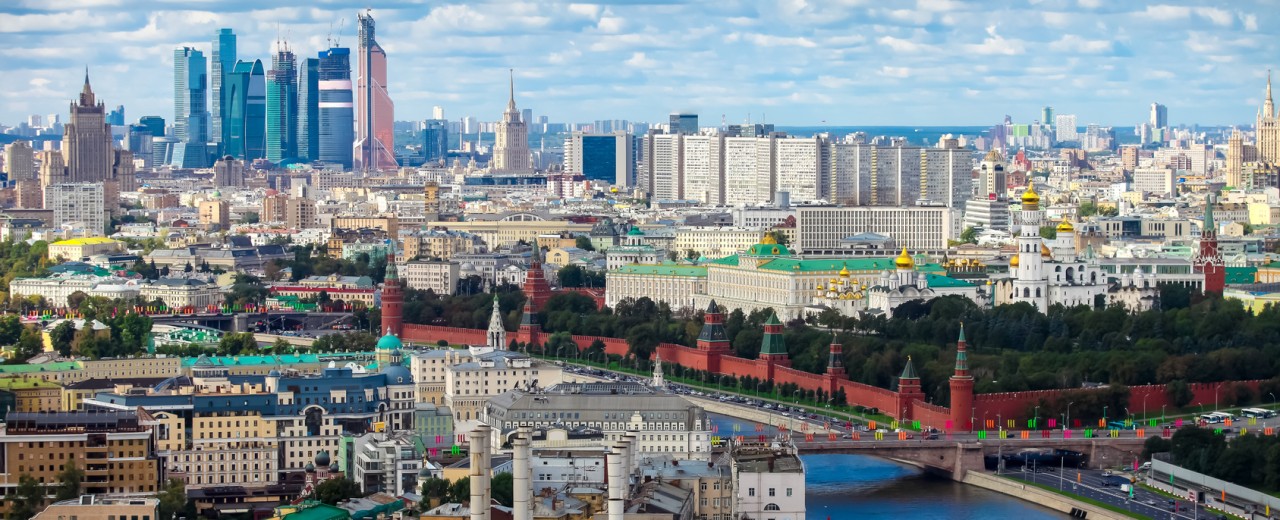Outside its walls is Red Square, the symbolic center of Russia. It is home to Lenin's Mausoleum, the State Historical Museum, and St. Basil's Cathedral, known for its onion-colored dome.
Area: 2,511 km²
Established: Before 1147
Local time: Tuesday 13:39
Weather: 2 °C, Wind SW at 29 km/h, Humidity 94%
Population: 11.92 million (2012)UNdata

First documented in 1147, Moscow grew to serve as the capital of the Grand Duchy of Moscow. When the Tsardom of Russia was proclaimed, Moscow remained the political and economic center for most of its history. Under the reign of Peter the Great, the Russian capital was moved to the newly founded city of Saint Petersburg in 1712, decreasing Moscow's influence. Following the Russian Revolution and the establishment of the Russian SFSR, the capital was moved back to Moscow in 1918, where it later became the political center of the Soviet Union. In the aftermath of the dissolution of the Soviet Union, Moscow remained the capital city of the newly established Russian Federation.
The northernmost and coldest megacity in the world, Moscow is governed as a federal city, where it serves as the political, economic, cultural, and scientific center of Russia and Eastern Europe. As a global city, Moscow has one of the world's largest urban economies. The city is one of the fastest-growing tourist destinations and is one of Europe's most visited cities. Moscow has the second-highest number of billionaires of any city (tied with Hong Kong). The Moscow International Business Center is one of the largest financial centers in the world and features the majority of Europe's tallest skyscrapers. Moscow was the host city of the 1980 Summer Olympics and one of the host cities of the 2018 FIFA World Cup.


When the USSR was dissolved in 1991, Moscow remained the capital of the Russian Federation. Since then, a market economy has emerged, producing an explosion of Western-style retailing, services, architecture, and lifestyles. The city continued to grow during the 1990s to 2000s, its population rising from below nine to above ten million. Mason and Nigmatullina argue that Soviet-era urban-growth controls produced controlled and sustainable metropolitan development, typified by the greenbelt built in 1935. Since then, however, there has been a dramatic growth of low-density suburban sprawl, created by heavy demand for single-family dwellings as opposed to crowded apartments. In 1995–97 the MKAD ring road was widened from the initial four to ten lanes.
In December 2002 Bulvar Dmitriya Donskogo became the first Moscow Metro station that opened beyond the limits of MKAD. The Third Ring Road, intermediate between the early 19th-century Garden Ring and the Soviet-era outer ring road, was completed in 2004. The greenbelt is becoming more and more fragmented, and satellite cities are appearing at the fringe. Summer dachas are being converted into year-round residences, and with the proliferation of automobiles there is heavy traffic congestion. Multiple old churches and other examples of architectural heritage that had been demolished during the Stalin era have been restored, such as the Cathedral of Christ the Saviour. In 2010s Moscow's Administration has launched some long duration projects like the Moja Ulitsa (in English: My Street) urban redevelopment program or the Residency renovation one.










No comments:
Post a Comment